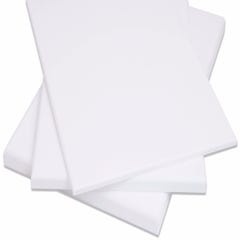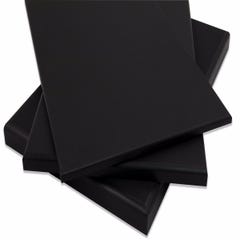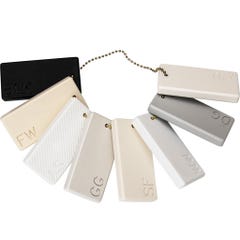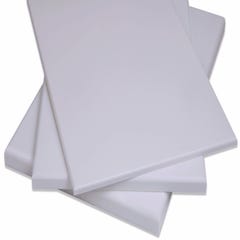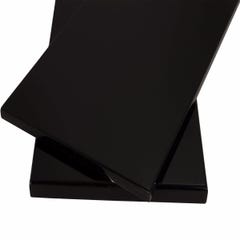Top 'Gotchas' When Working With King Starboard
January 09, 2023 4 min read


If you want to know what we think of King Starboard as a material for marine fabrication, consider this: year after year, Boat Outfitters is the single biggest buyer in the world of Starboard HDPE sheets.
At the end of the day, Starboard is a near-perfect replacement for teak and marine plywood in applications like swim platforms, tackle cabinets, access doors and hatches, drink and tool holders, grab rails and handles, tables and cutting boards, and much more.
It’s impervious to moisture and UV and will never rot, discolor, delaminate, swell or deteriorate in any of the various other ways that wood and laminates will after enough time in the water and weather. Plus, it’s easy to fabricate with basic woodworking tools and requires no painting, sealing or finishing of any kind.
Contents
Six Tips To Know When Working With Starboard
All that being said, Starboard, like just about everything, has its quirks. As much as we love the stuff, it’s not the ideal material for every application. So in the interest of helping you choose the right material for your project.
Here are the top 6 King Starboard “gotchas” — the quirks and challenges you should be aware of up front.
1. You Can’t Glue Starboard
This “gotcha” is widely known but bears repeating. The only way to permanently, securely attach Starboard to Starboard — or, for that matter, to fiberglass, metal, wood or anything else — is with mechanical fasteners.
Not even 3M 5200 sticks to Starboard.
Yes, there are certain adhesives — Chem-Set 6105 Polyolefin Bonder, Scotch-Weld DP-8005 and Lord 7542-AB — that will bond to some degree with appropriate surface prep, which involves sanding, cleaning with solvent, and flame treating with a propane torch. But if you need a positive, permanent attachment, screwing and through-bolting are essentially the only options.
2. You Can’t Paint It
Again, most boaters know this, but paints, resins and other coatings don’t stick to Starboard — not two-part marine paints, not epoxy, not gelcoat, not even that old rattle can of Rustoleum on your garage shelf.
Of course, the other side of this coin is that Starboard — unlike wood and fiberglass — doesn’t need any kind of coating to protect it from water or sunlight. And that saves both money and labor. Remember too that the same properties that keep paint from sticking also keep grime, mud, blood and other stains from sticking, which makes Starboard very low maintenance.
3. Starboard Is Not Shiny
Starboard is engineered with a matte finish on both sides, and it is not meant to be sanded or polished. If you want or need a glossy finish, consider an alternative material such as acrylic sheeting or a fiberglass laminate coated with gel coat or marine paint.
The manufacturer recommends a uniform, light sanding only as a last resort to remove stubborn stains.


Just like the fact that Starboard can’t be painted, though, this “gotcha” comes with a silver lining: Starboard will never need wet sanding, compounding, polishing, or waxing.
4. It’s Flexible
Rigidity isn’t one of Starboard’s strengths. In fact, it’s generally more flexible than marine plywood of the same thickness. If rigidity is important — say for a casting deck — you’ll get a better stiffness-to-weight ratio from plywood encapsulated in fiberglass or, better yet, fiberglassed Coosa Bluewater 26 composite board
Obviously, the thicker the Starboard material, the less it will flex, and the bigger the unsupported span, the more it will flex. As a general rule, for almost any application that will be walked on — deck hatches, for example, or swim platforms — Starboard needs to be either stiffened or supported from beneath.
Starboard is not a good choice for structural applications like stringers, transoms or bulkheads.
5. It Can’t Be Heated
Unlike acrylic sheets, which can be heated and readily formed to make curved windshields, dash panels, doors and so on. Starboard is difficult to heat and doesn’t hold its shape well after bending or forming. For projects that require anything but flat planes, there are better material choices.
6. Starboard Changes with Temperatures
Starboard will expand in all directions by 1/32” per foot when heated by 40 degrees Fahrenheit and will contract by the same amount if cooled 40 degrees.
In other words, if you take a sheet of Starboard that is 24” x 24” in your workshop at 80 degrees and lay it in the summer sun for a few hours until it warms up to 120 degrees, it will measure 24-1/16” x 24-1/16”.

